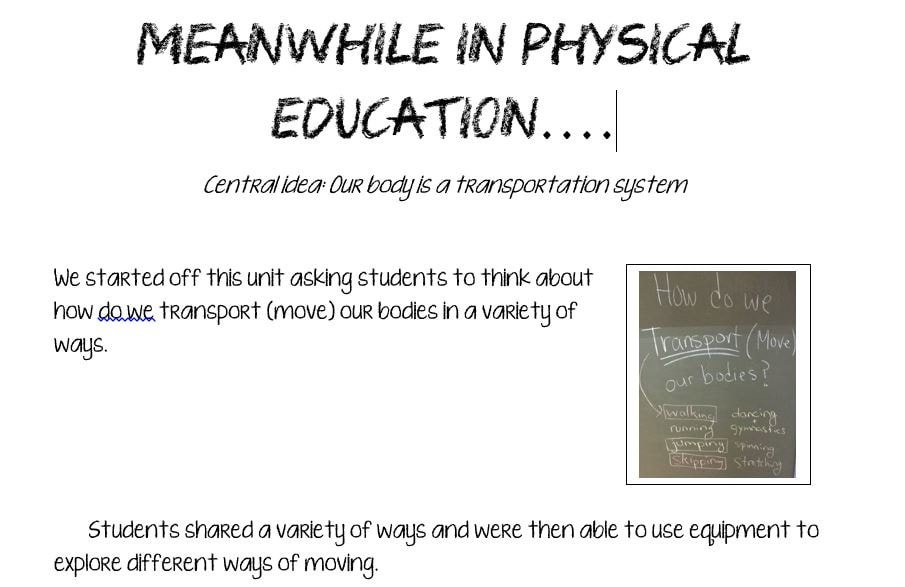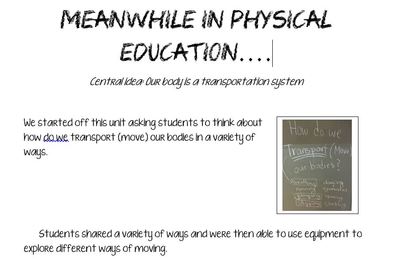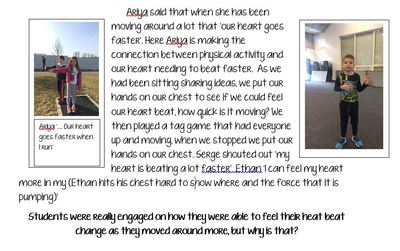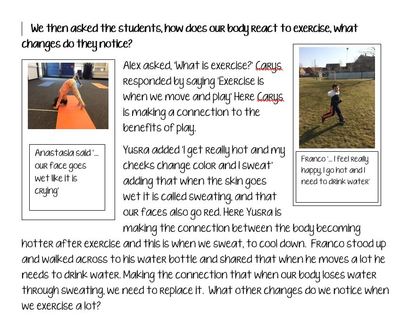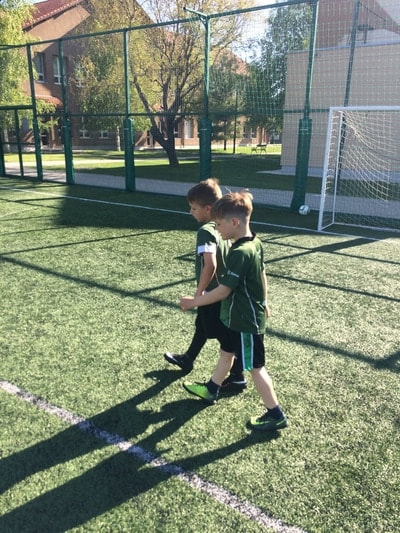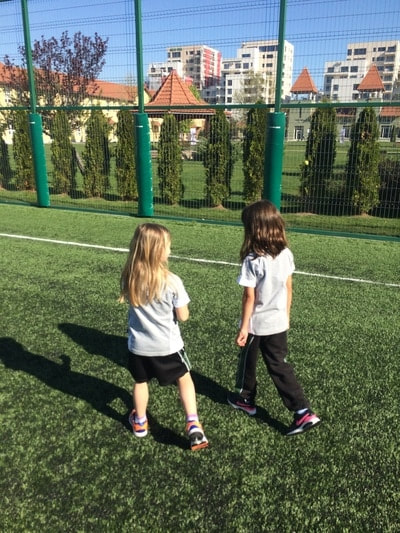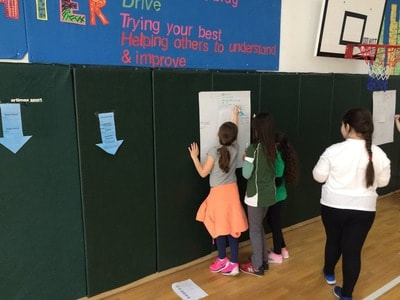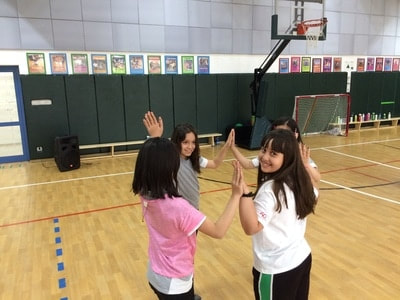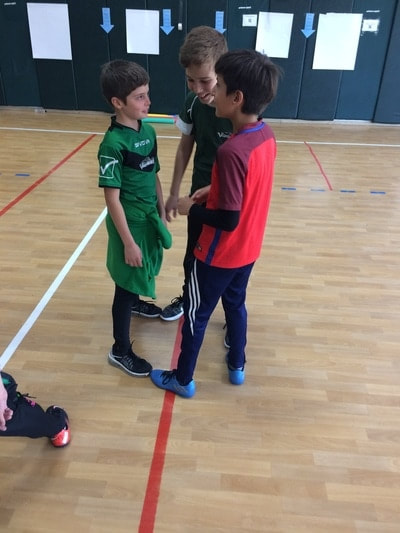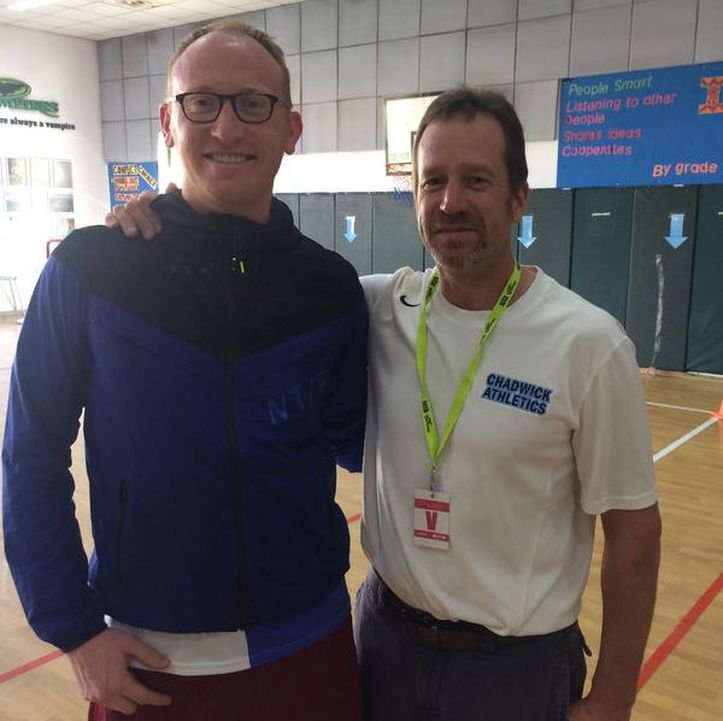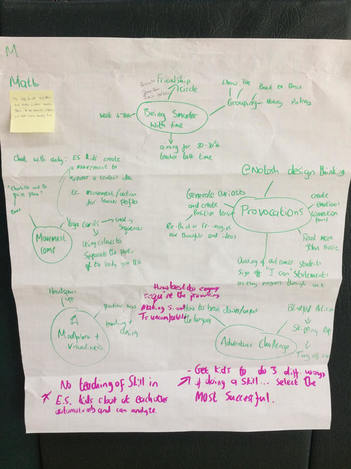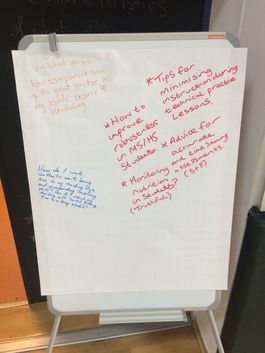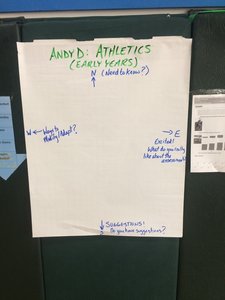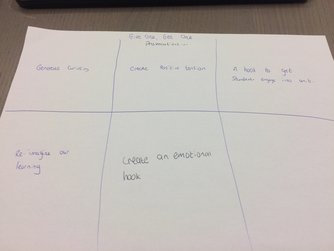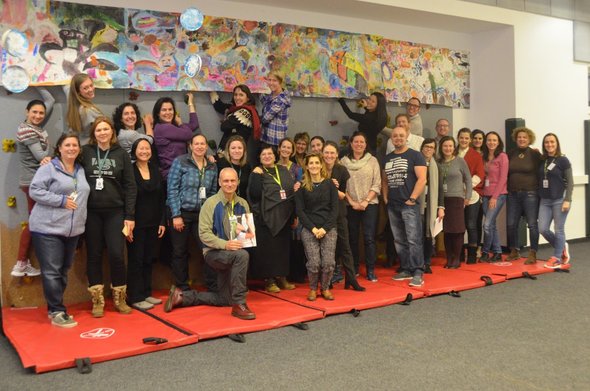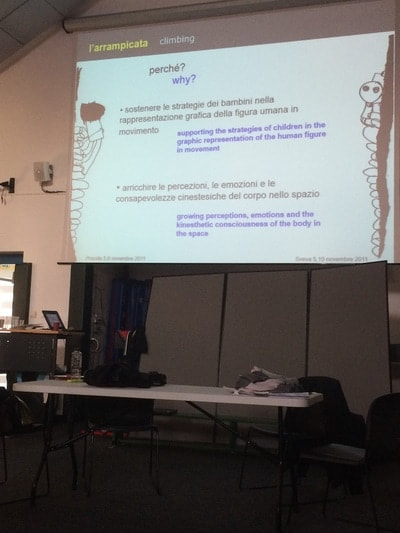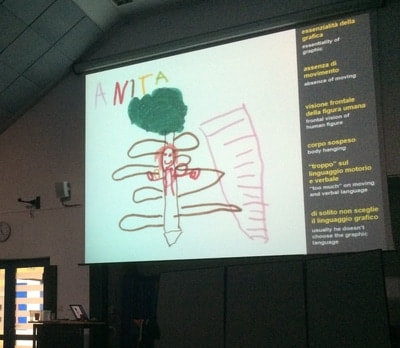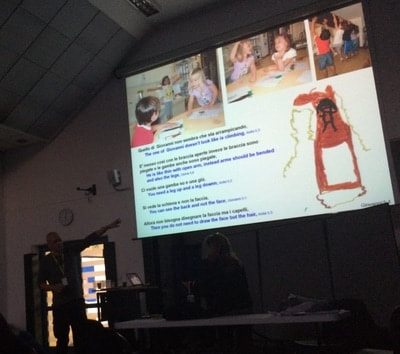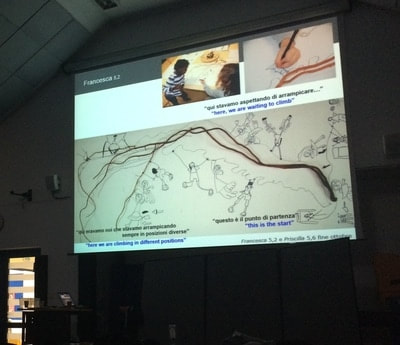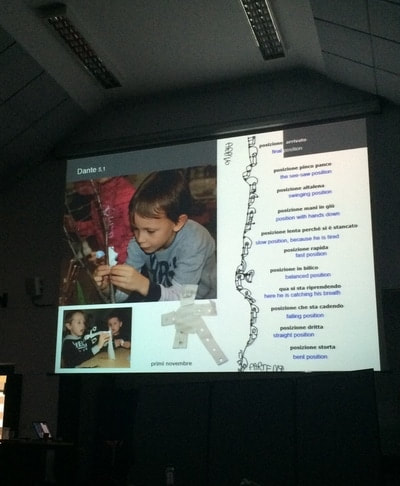|
Since January and the visit made by Reggio Emilia educators Elena Giacopini and Mateo Bini I have been contemplating how best to document learning within PE, specifically within Early Childhood, whereby we are able to show the process of learning. The January PD session made me reflect upon my own practice whilst believing in a social constructivism approach to learning, how does my learning environment reflect this? How does my documentation reflect the learning that takes place within my lessons? For the purpose of this blog post, when talking about documentation I am referring to what will appear in a students portfolio, documentation of learning happens throughout the unit and guides the inquiry. A particular focus has been how to show the process of learning to the parents so they are aware of this and can become part of the process with their child. KG started a new unit focusing on transportation systems, in PE our central idea was 'Our body is a transportation system'. The unit was to look at the effects of exercise on the body, with our initial idea to focus on the cardiovascular system i.e. how blood is transported around the body and the respiratory system the inhalation and exhalation of oxygen, as the unit progressed tho student interest led to a focus on the cardiovascular system. Whilst going through this process, we (I team teach KG with Alex Sota) tried to allow more time for student voice and to avoid rushing learning with a perceived need to 'get something done' by a specific time. This enabled student voice to become central to the learning, with our role as facilitators responding to their ideas, interests and conversations.
Through making student learning visible, documenting their conversations and working theories students were able to see and reflect upon their learning. As teachers we were able use this information to plan following sessions, leading to more authentic inquiry. Whilst through the inclusion of multiple student voices in the students documentation it reflects the process of student learning, showing understanding and constructing meaning as a continuous process. After going through this process I still have many questions; are the connections I have made to student comments really my own connections? Should I have included more of the student 'physical' developments in the portfolio? How or when to is the best time to use a provocation to ensure that all students voices are heard? Did all students really want to focus on the cardiovascular system after feeling their heart beats, or did we as teachers direct this?
1 Comment
Is it really a month since #AISB17PE? Conferences that I have been too in the past have been a great motivator and provided me with many practical activities which I have been able to apply within my lessons, straight away in many instances. In my previous blog post on #AISB17PE I set myself some targets, with the aim of developing my practise as a PE teacher these were: *Recording with a stopwatch my teacher talk time daily on specific lessons and reflect on ways to keep this to a minimum (using some of the strategies used at the conference, listed below) * Being an active member of #physed and using my blog more to reflect on my teaching practice. * To spend more time on creating my provocations, to get students hooked right away in the unit, using @NoTosh brainstorming tool. A big take away from the conference was the organisation of time & equipment and the environment that this creates for learning. I was particularly keen to record my teacher talk time, whilst believing that my classroom environment is a place that students are actively involved in the process of learning and that students are teachers in their own right. Does my practise reflect this? During #AISB17PE Andy talked about teacher talk time and I set myself a new target of 20-30% , with this I took my stopwatch to my lessons. Teaching across various age ranges (KG, Grades 1, 3 & 4) I recognise that my teacher talk time already is somewhat dependent upon the age group I'm teaching, talk for over a minute to my KG group and a glazed over look or fidgeting tells me they are not engaged. Recording my teacher talk time over the last month has been an interesting experience, dependent upon the lesson and the stage of the unit students are in my talk time has been from 17% up to 42%. Recording my teacher talk time over the last month has been an interesting experience, dependent upon the lesson and the stage of the unit students are in my talk time has been from 17% up to 42%. Walk and Talks; a strategy modeled by Andy where students partner up walk and share ideas and reflections on a set topic and then share with the wider group has been the biggest change in our classroom environment. This has enabled students to understand, construct or develop new learnings for one another. As students have gone through the units, walk and talks have enabled students to explore and pose more wonderings; helping us to go deeper conceptually. I have also used 'Compass Points' to get Grade 4 students to give feedback on their fitness circuits that they have designed to try and improve 3 different components of fitness, this enabled students to receive feedback from their classmates in a quick way. I also found that students were more honest and open to constructive feedback that they received when doing this, in comparison to giving feedback face to face. Andy also showed us quick ways to get the class divided into teams, these generally got students up and running as soon as they came in and when a signal was given students had to go toe to toe or back to back etc, anyone who didn't get a partner or part of a group could meet up in a already assigned friendship area. This has helped a lot in reducing inactivity, and also has led to a decrease in behavioural issues as upon reflection these issues occur during 'down time' and by reducing this transitions between activities have been a lot smoother.
One month on from #AISB17PE and there have been many takeaways from the conference that have had an instant impact on my role in student learning. Teacher talk time was the big focus as I started on this blog post, but as I have gone through the last month thinking about this I have decided that going forward I will need to consider a more effective way of measuring teacher talk time than just minutes and seconds. There are times when it is needed to front load a lesson, maybe at the start of a unit or during a provocation. Is there a way that I can measure the value of what I am saying? This was my teaching philosophy that Andy Vasily asked us to write down on a post it note prior to the first session on provocations at the CEESA PE workshop. Andy stated (in hindsight, maybe as a provocation) that our role was to be mentors and to ‘forget about physical literacy’. Was this a planned provocation? Regardless, it certainly got my attention and created positive tension. I like Rachel Browns definition of a provocation from her blog, where she says ' ..ultimately the intention of provocations is to provide an invitation for a child to explore and express themselves. It should be open ended and provide a means for an expression where possible....' Andy gave provocative examples he's used throughout his teaching, his videos in particular created an emotional hook. The most useful tool was the @NoTosh brainstorming template;used when designing a provocation for an athletics unit (for a closer look at this please click here). The provocations that Andy shared throughout the conference created an emotional hook, combined with @NoTosh brainstorming template I hope to find new, more creative ways that get students to rethink or reimagine their thoughts and learnings. How can we ensure a provocation creates an emotional hook for a whole group? During a practical session Andy focused upon time, more specifically on how we can be smart with our time reducing teacher talk time (target from now on is 20-30%), whilst increasing activity time for students. There have been times when I have reflected upon my lessons and thought about whether or not I was talking too much, not only impacting on students ability to be active but also, limiting the students time to collaborate and construct their own learning. Andy provided practical ideas such as divide classes into smaller groups and teams. (Coming soon: post about how I have integrated this within my lessons and the impact that it is having.) Post conference goals *Recording with a stopwatch my teacher talk time daily on specific lessons and reflect on ways to keep this to a minimum (using some of the strategies used at the conference, listed below) * Being an active member of #physed and using my blog more to reflect on my teaching practice. * To spend more time on creating my provocations, to get students hooked right away in the unit, using @NoTosh brainstorming tool. Strategies Throughout the Conference Learning Nests – Each participant had a piece of chart paper hung in a central location, after each session we’d write down our reflections here. 1 minute Ted Talk – At the end of the conference we had 1 minute to share our learnings, or further questions from throughout the conference. Walk and Talk – With a partner walking around the space sharing ideas and reflections. Parking lot – After the walk and talk we are able to post any questions that you had which followed that session. Demo Slam - Split groups into 8, each participant had to share their main takeaway from the session in 20 seconds. Compass Points - Big chart paper with North representing 'Need to know', East 'What are you excited about?', South 'Suggestions' and West 'Ways to adapt / modify'. Students walk around looking at a piece of working adding their thoughts. Gallery Walk - Assessments hung around the gym, walk around a do a 'Chalk and Talk'; where participants walk around, looking at the work that is displayed and adding their thoughts to it using the compass points as a guide. Give one, Get one - Paper is divided into 6 block, 3 on the top and 3 on the bottom. Across the top you write down three important points, then you go around sharing your points with others. If someone shares something that resonates with you, add it to the bottom row. Grouping Strategies Elbow, toe, back to back and hokey pokey groups. Create a friendship circle for anyone who has not found a group or partner. Andy Dutton - @PEAndyD A 10 week intensive, pull out program led by @PEAndyD. It is a MRT (motor remedial program) for children 7 and under who do not have appropriate gross motor skills for their age.
Something else shared by @PEAndyD was to get students to create a movement that represents each word of the central idea creating a sequence. repeat throughout the course of the unit and the students will know the central idea. We did it and it was great! In preparation for the Early Childhood moving into a multi-million euro Reggio Emilia inspired building we were joined by Elena Giacopini and Matteo Bini from Reggio Emilia to further our understanding of the Reggio approach. I was coming into this training with little of what Reggio Emilia looks like and how it would affect my practice. Reggio is an approach and not a method and therefore it is a philosophical framework and does not provide any standards or outcomes. Reggio is an inquiry based approach that recognizes that learning is transdisciplinary, based on the theories of social constructivism, and should be student centered, whilst placing a great importance on the environment. Elena and Matteo constantly provoked and made me question a variety of aspects of how I approach my role in student learning. I do believe that students learn from one another and that they are more engaged when they are not being ‘taught’ at. Upon reflection, there are times when instead of focusing on the students experiences and letting this shape the learning. I sometimes impart my knowledge or funnel students into my way of thinking. Are there times when this is ok? How could some specific skills be taught otherwise? Documentation of students learning is key at Reggio Emilia, this can be seen through the portfolios which are made and follow the students through the school, to how the day is organized and through teacher meetings and discussions. The challenge that I have been contemplating recently is how do we document the process of learning within PE, I have previously recorded a dance routine that students have done at the end of the unit, placed this within student portfolios, but how did they move through the creative process to this end point. Whilst ‘doing’ is a fundamental part of learning, is it enough? Students and teachers must document and reflect throughout the process. One of the key focal points of Reggio Emilia is the 100 languages, which Loris Malguzzi, founder of Reggio Emilia, described as the ‘Infinite ways in which children can express, explore and connect their thoughts, feelings and imaginings.’ The Reggio Emilia approach recognizes and appreciates children as competent and naturally curious learners who can express themselves, and we as teachers need to recognize and document how their learning is developing. Jay McTighe highlights the multi-faceted aspects to learning and how we should consider this when assessing ‘An important concept in assessment lies in our understanding of learning and the learning process and a recognition that learning involves much more than just taking in conversation and giving it back. It involves constructing meaning and making sense of things, seeing things from a different perspective and truly developing an understanding of what students are learning’ so if as an inquiry teacher we are hoping to develop students understanding of key concepts we need to design tasks and ask questions which takes students learning from knowledge to understanding. Here KG students are drawing themselves after climbing a tree, self and peer assessing work. Students talk about body positions/movements/key features whilst considering point of view and use of different materials. Whilst I regularly observe, question and provoke during PE lessons, how do I document this with each child? Making thinking visible routines having proved extremely useful, but this is only one ‘language’. How often should I conference with students? How is this information stored and shared with other teachers and can other teachers comment on what they have seen? How do I document children reflecting on the process, as this constitutes learning. These will be the questions I will be taking forward, documentation should show the process of student learning, showing both the student and the teacher how their learning developed.
|
